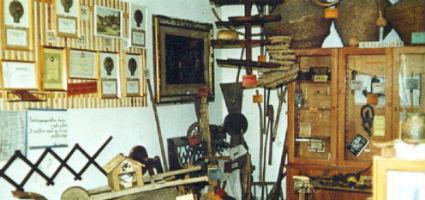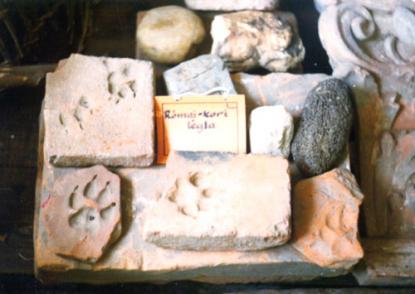2025. July 14. Monday
Vág Region Historical Collection - Vág
 |
Address: 9327, Vág Petőfi utca 2.
Phone number: (96) 533-008
Opening hours: on prior notice
|
The region, which embraces the Vág, is situated in the south of Rábaköz, on the planes of the Kisalföld. It is easy to find it on the map: the river Rába designates its borders. An old play of words goes like this: 'Where Saint Peter cuts it is fast-flowing'.
People lived at this place from ancient time. We can still find Roman stones in the outskirts of the village. Our ancestors, the original settlers also made use of the advantages if the area, the soil, the forests, and the river. The founding letter made in Pannonhalma on 11, November 1001 mentions Vág as one of the fishing villages.
Throughout the history of the village, the earth at this area absorbed numerous memories. The lucky people and those in search of the past found many interesting findings.
However, it was necessary to organize a conscious way of collecting these objects. I tried to teach my students that they should never pass by any object of the past in the fields, on the bank of the Rába, or on the attic without taking it into their hands and bringing it in to the museum. Many of the objects were obtained like this. We managed to save the artworks, to put down their ideas. We are proud to preserve the memory of two important persons of the village: Ferenc Wathay and József Vág. The visitors may find the woeful, but still stirring memoirs of the Hungarian history.
The abundance of the collection of local history in Vág is not enough to invite visitors to the village since the state of the building is so bad and sad that it is not safe. It would seem as the most untended public building of the village. Still, we do have a large number of interested people visiting us.
The walls of the building are cracked, inside the picture of fading is frightening, the structure of the roof is dangerous, and the values are unprotected against time. We have no income to use to stop this decay, the self-government is in need of money, and the Ministry of Cultural Heritage did not offer its help.
Our last hope to save the building is in the Internet. We may meet a patron who is magnanimous and offers his/her help for us. The Collection of Local History of the village of Vág is an important location of education. Not long ago, a visitor from Budapest was happy to say that 'this collection is a treasury' when she saw the visitor's book of the museum.
Imre Nagy
People lived at this place from ancient time. We can still find Roman stones in the outskirts of the village. Our ancestors, the original settlers also made use of the advantages if the area, the soil, the forests, and the river. The founding letter made in Pannonhalma on 11, November 1001 mentions Vág as one of the fishing villages.
Throughout the history of the village, the earth at this area absorbed numerous memories. The lucky people and those in search of the past found many interesting findings.
However, it was necessary to organize a conscious way of collecting these objects. I tried to teach my students that they should never pass by any object of the past in the fields, on the bank of the Rába, or on the attic without taking it into their hands and bringing it in to the museum. Many of the objects were obtained like this. We managed to save the artworks, to put down their ideas. We are proud to preserve the memory of two important persons of the village: Ferenc Wathay and József Vág. The visitors may find the woeful, but still stirring memoirs of the Hungarian history.
The abundance of the collection of local history in Vág is not enough to invite visitors to the village since the state of the building is so bad and sad that it is not safe. It would seem as the most untended public building of the village. Still, we do have a large number of interested people visiting us.
The walls of the building are cracked, inside the picture of fading is frightening, the structure of the roof is dangerous, and the values are unprotected against time. We have no income to use to stop this decay, the self-government is in need of money, and the Ministry of Cultural Heritage did not offer its help.
Our last hope to save the building is in the Internet. We may meet a patron who is magnanimous and offers his/her help for us. The Collection of Local History of the village of Vág is an important location of education. Not long ago, a visitor from Budapest was happy to say that 'this collection is a treasury' when she saw the visitor's book of the museum.
Imre Nagy
|
Permanent exhibitions
|
|
